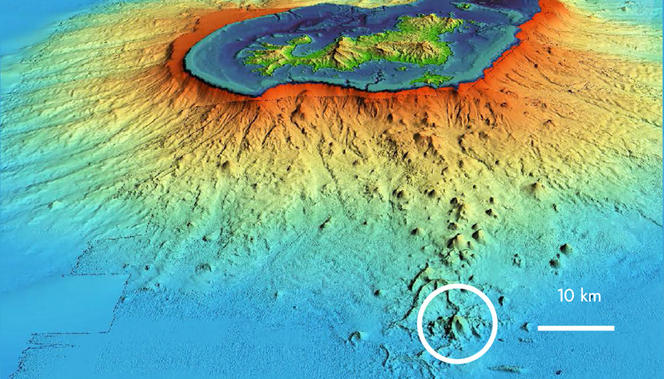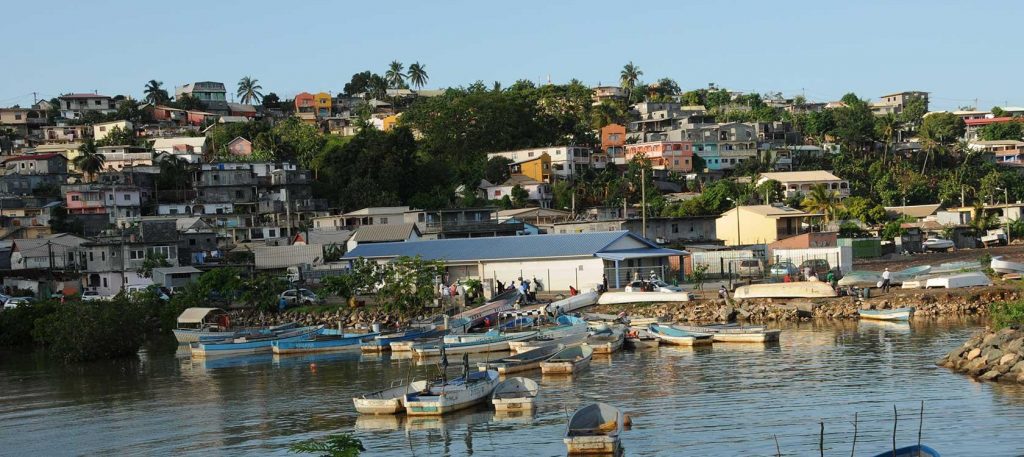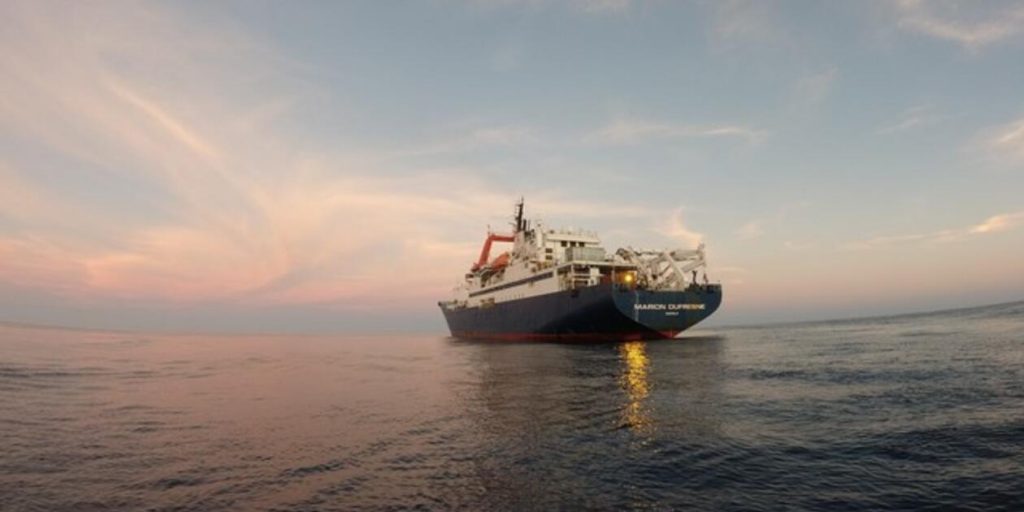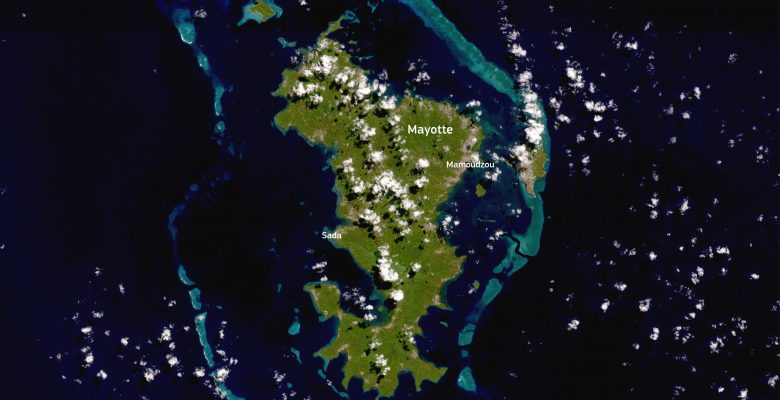Nestled in the heart of the Indian Ocean between Africa and Madagascar, Mayotte has so far experienced moderate seismic activity. But when an earthquake measuring 5.9 on the Richter scale struck the island in May 2018, it came as a shock. Since this event, a monitoring mission has been set up by the French Authorities to understand the origin and mechanisms of this new threatening activity for the territory and its populations.
Like many island territories, the Mayotte archipelago is particularly exposed to rising sea levels, especially as more than 80% of its villages are located by the sea.
But since 2018 and the earthquake recorded with a coefficient of 5.9 on the Richter scale, the territory has been sinking at an even more worrying rate. The very first MAYOBS campaign to monitor seismic activity off Mayotte revealed the existence of an underwater volcano named Fani Maoré, barely 50 km from the archipelago.
The tremors felt on the island in 2018 were caused by the upwelling of magma from this volcano into the earth’s crust. This veritable underwater colossus emits more than 400 cubic meters of lava per second, and its eruption in 2018 very quickly had major consequences, causing the archipelago to shift 24 cm to the east and bury it 19 cm deep.

The discovery of the underwater volcano off Mayotte (here surrounded by a white circle) revealed by the MAYOBS mission. Credits: MAYOBS-IPGP/CNRS/IFREMER/BRGM
A mountain of data for close monitoring of the area
Since 2019, the Réseau de Surveillance Volcanologique et Sismologique de Mayotte (REVOSIMA) has been coordinated by the Institut Physique du Globe de Paris (IPGP) and the Bureau de recherches géologiques et minières (BRGM), in collaboration with a number of French institutions, including the Institut Français de Recherche pour l’Exploitation de la Mer (Ifremer) and the Centre National de la Recherche Scientifique (CNRS).
REVOSIMA’s aim is to understand the various geophysical phenomena off Mayotte, using measurements taken frequently at sea to prevent and protect populations, as well as to perpetuate the establishment of these observation networks.
MAYOBS campaigns take place one after the other in the vicinity of Mayotte, with an average of 5 to 6 campaigns per year. Numerous instruments are deployed (seismometers, absolute pressure sensors, hydrophones, etc.) and the data collected each year provides further evidence of the major role played by the Fani Maoré volcano in the area.
MAYOBS25, an interdisciplinary project close to the field
This year, from September 11 to 28, 2023, the MAYOBS campaign set sail for its 25th edition aboard the research vessel Marion Dufresne to collect seismic and geophysical data to the east of Mayotte. The operation has three main focuses
– Maintenance of instruments already installed at seabed stations: seismometers, absolute pressure sensors and hydrophones…
– Collection of multiple acoustic data: multibeam echosounders positioned on the boat, sediment echosounders…
– Monitoring seismic activity in the area and associated changes in submarine relief:
This 25th MAYOBS operation in particular strengthens cooperation between scientists from different ocean disciplines: geologists, seismologists, vulcanologists, biogeochemists and, for the first time this year, physical oceanographers. The latter have the onerous task of collecting data from several ADCP or acoustic Doppler current meters, to better assess the region’s marine currents.

A port in Mayotte © Isabelle Bonillo / AFD
A deep-sea observatory with ambitious long-term prospects
Numerous MAYOBS campaigns have led to major advances in scientific knowledge of seismic activity off Mayotte.
With an ambition to setting up a permanent monitoring network, a frame was installed for the first time last year to better characterize ocean dynamics in the area. However, underwater degassing sites were recently discovered in the vicinity of the volcano. To be able to safely deploy and maintain instruments at depth, scientists will now need to analyze and understand these degassing mechanisms, and the associated ocean dynamics.

The Marion Dufresne off Mayotte, during the MAYOBS15 campaign. Credit: IPGP, BRGM, Ifremer, CNRS
In the long term, REVOSIMA aims to install a cabled seabed observatory. This ambitious project, dubbed MARMOR, would enable continuous seismic monitoring of the area, a necessity for this overseas region now recognized as one of the planet’s hotspots of volcanic activity.
